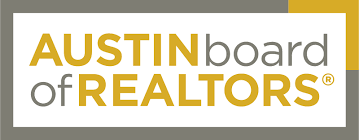The Secured Overnight Financing Rate (SOFR) Index is a broad measure of the cost of borrowing cash overnight using U.S. Treasury securities as collateral. It is an interest rate benchmark that was introduced by the Federal Reserve Bank of New York in April 2018, with the support of the U.S. Alternative Reference Rates Committee (ARRC).
The SOFR Index was developed as a more robust and reliable alternative to the London Interbank Offered Rate (LIBOR), which has been subject to manipulation scandals in the past. LIBOR is being phased out, and SOFR is becoming a widely accepted alternative reference rate in the financial markets, particularly for U.S. dollar-denominated contracts and securities.
SOFR is based on actual transactions in the U.S. Treasury repo market, where banks and other financial institutions lend and borrow cash overnight using Treasury securities as collateral. This makes SOFR a more transparent and representative benchmark than LIBOR, which is based on estimated borrowing rates submitted by a panel of banks.
The SOFR Index is calculated and published daily by the Federal Reserve Bank of New York. It reflects the volume-weighted median of overnight repo transactions, providing a transparent and risk-free reference rate that can be used for various financial instruments, such as loans, derivatives, and floating-rate securities.
The adoption of SOFR as a benchmark rate aims to enhance the stability and integrity of the financial markets by reducing the reliance on an estimated and potentially manipulable rate like LIBOR.
Adjustable-rate mortgages (ARMs) are a type of mortgage loan in which the interest rate applied to the outstanding balance varies throughout the life of the loan. With the phase-out of the London Interbank Offered Rate (LIBOR), which was traditionally used as a reference rate for ARMs, the Secured Overnight Financing Rate (SOFR) has emerged as a more reliable and widely accepted alternative.
Here's how adjustable-rate mortgages use SOFR as a reference rate:
1. Initial fixed-rate period: An ARM typically starts with a fixed interest rate for a predetermined period, usually ranging from 3 to 10 years. During this time, the interest rate and monthly payments remain constant.
2. Adjustment period: After the initial fixed-rate period, the mortgage enters the adjustment period, during which the interest rate is subject to change at predetermined intervals, such as annually or semi-annually. This is where SOFR comes into play.
3. Calculation of the new interest rate: At each adjustment interval, the new interest rate for the ARM is calculated by combining a fixed margin set by the lender with the current SOFR value. For example, if the fixed margin is 5.5% and the current SOFR is 1.25%, the new interest rate on the ARM would be 6.75%.
4. Adjustment cap: To protect borrowers from extreme fluctuations in interest rates, ARMs often include adjustment caps that limit how much the interest rate can change at each adjustment interval and over the life of the loan.
By using SOFR as the reference rate, adjustable-rate mortgages can provide borrowers with a more transparent and market-based interest rate that reflects prevailing market conditions. The use of SOFR in ARMs contributes to the broader adoption of this benchmark rate in the financial markets, promoting stability and reducing the reliance on potentially manipulable reference rates like LIBOR.



